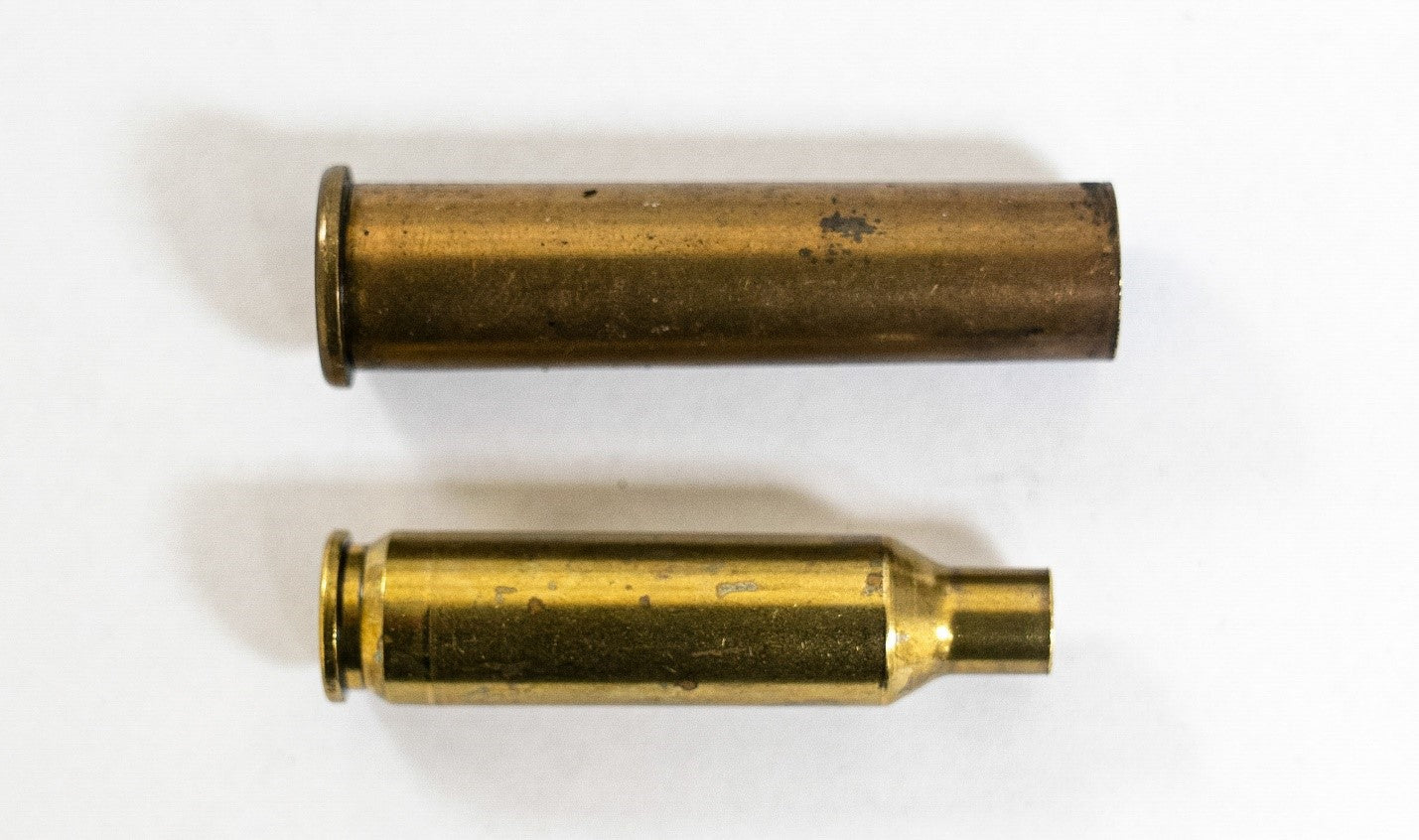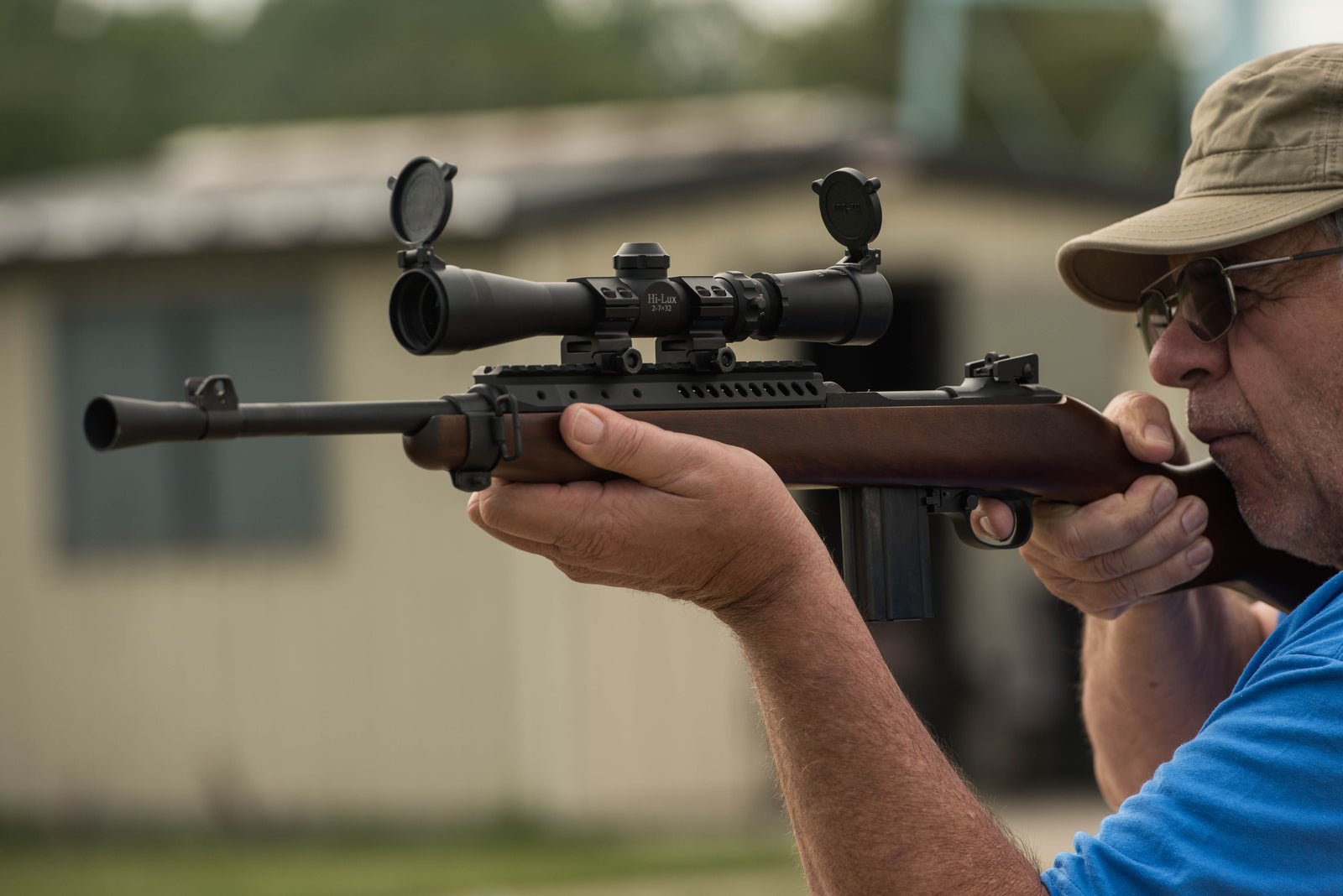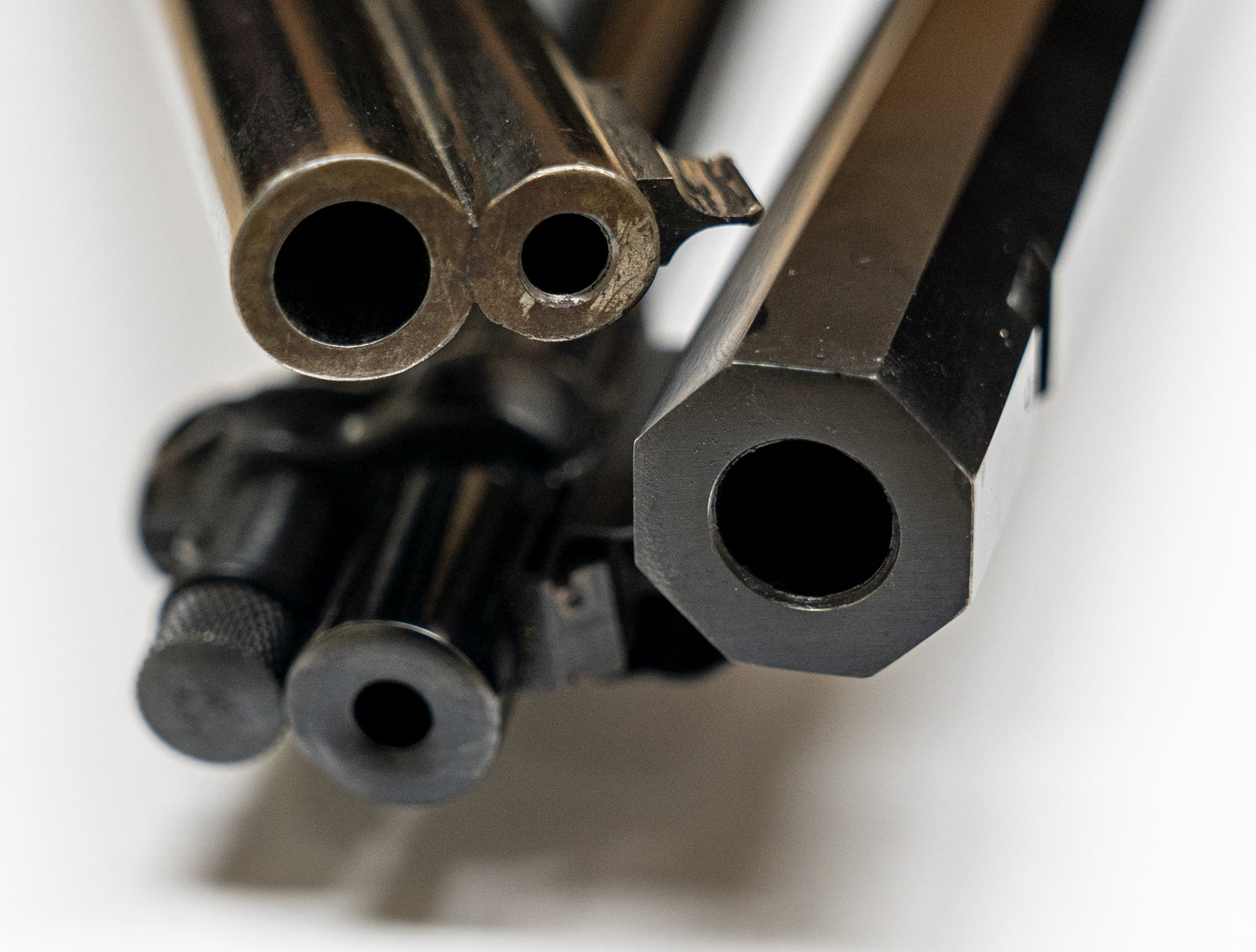Cases come in many sizes, but only two general shapes: bottlenecked and straight walled.
A straight walled case is shaped how it sounds - the case is a constant diameter from the neck down. Straight walled cases typically fire with a lower velocity and pressure than bottlenecked cases, as the bullet is quite wide in relation to the amount of powder that can fit behind it. Simply put, you’ve got a heck of a lot of bullet to push. Straight walled cases, when inserted into the rifle, stop when the rim of the case meets the lip of the chamber. There is no shoulder.

Above: A straight walled case atop, bottlenecked case below.
A bottlenecked case - where the bullet is narrower than the case diameter - can fit quite a bit of powder relative to the size of the bullet. This allows for higher pressure and velocity as compared to straight walled cases. These cases should fit into the chamber and stop at the shoulder, without excessive neck length.

A bottlenecked cartridge (.30-06 Springfield) inserted into a chamber. The rim and extractor groove stick out of the chamber so that the cartridge can be extracted.
To picture the differences in velocity, let’s imagine two cases of equal diameter. Let’s also pretend they have the same amount of powder. In the bottlenecked case, the bullet is of smaller diameter than the head of the case. In a straight walled case, the bullet is roughly as wide as the widest portion of the case. This makes the straight-walled’s bullet wider and proportionately heavier than the bottlenecked case’s bullet. If there’s equal amounts of powder, the case with the heavier bullet will have a harder time providing acceleration. Straight walled cases almost always have lower velocities than bottlenecked cases for this simple reason… and one other.
Straight walled cases come from further back in history. At the time, rifles and ammunition couldn’t handle the temperatures and pressures that we may be accustomed to today. Regardless of the bullet weight, the cartridge may simply be designed to operate at lower pressure due to the metallurgy available at its creation.
Some cases will have a slight taper leading from the head to the shoulder. These tapered cases are usually referenced by which of the above two shapes they’re closest to - bottleneck or straight wall. Tapered cases will almost always be bottlenecked, but the world of firearms is a large place.
If your rifle has a magazine that curves, it likely means your cases are tapered. If your magazine is straight, then your cases are not tapered. A tapered case should, theoretically, be easier for the rifle to extract after firing. As long as you match your ammo to your chamber, it should feed and seal just fine regardless.





Leave a comment (all fields required)